Introduction to Tourist Places in Tripura
Tourist places in Tripura offer a delightful mix of natural beauty, cultural heritage, and historical significance. From ancient temples to royal palaces, this northeastern state is rich in attractions that captivate the heart of any traveler. In this guide, we will explore the top destinations in Tripura that you must visit.
1. Ujjayanta Palace:
Ujjayanta Palace, a majestic architectural marvel in Agartala, Tripura, stands as a symbol of the state’s royal heritage. Built in 1901 by Maharaja Radha Kishore Manikya, this grand palace blends Mughal, Indo-Saracenic, and neoclassical styles, making it one of Northeast India’s most iconic landmarks.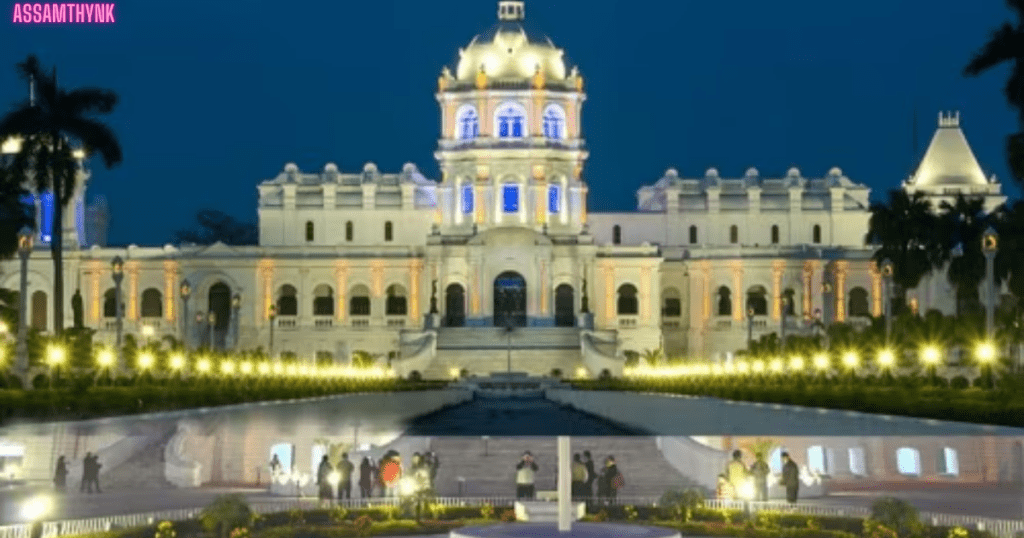
The palace, set amidst lush gardens with fountains and lakes, once served as the royal residence of the Manikya kings. Today, it houses the Tripura State Museum, showcasing a vast collection of artifacts, sculptures, tribal relics, and cultural exhibits that highlight the state’s rich history. The intricately designed interiors, with their grand halls and exquisite woodwork, reflect the opulence of Tripura’s royal past.
A visit to Ujjayanta Palace offers a deep dive into Tripura’s cultural legacy, making it a must-visit for history enthusiasts and architecture lovers. The illuminated palace at night adds to its charm, creating a mesmerizing sight. Located in the heart of Agartala, it is easily accessible for tourists. Whether for its historical significance, stunning architecture, or cultural exhibits, Ujjayanta Palace remains a regal attraction that captivates visitors from all walks of life.
- Best Time to Visit: October to March
- Attractions: Royal gardens, museum, scenic views
2. Neermahal:
Neermahal, meaning “Water Palace,” is a stunning architectural masterpiece located in the middle of Rudrasagar Lake in Tripura. Built in 1930 by Maharaja Bir Bikram Kishore Manikya, this magnificent palace reflects a blend of Mughal and Hindu architectural styles. It is the largest water palace in Eastern India and one of the most unique heritage sites in the country.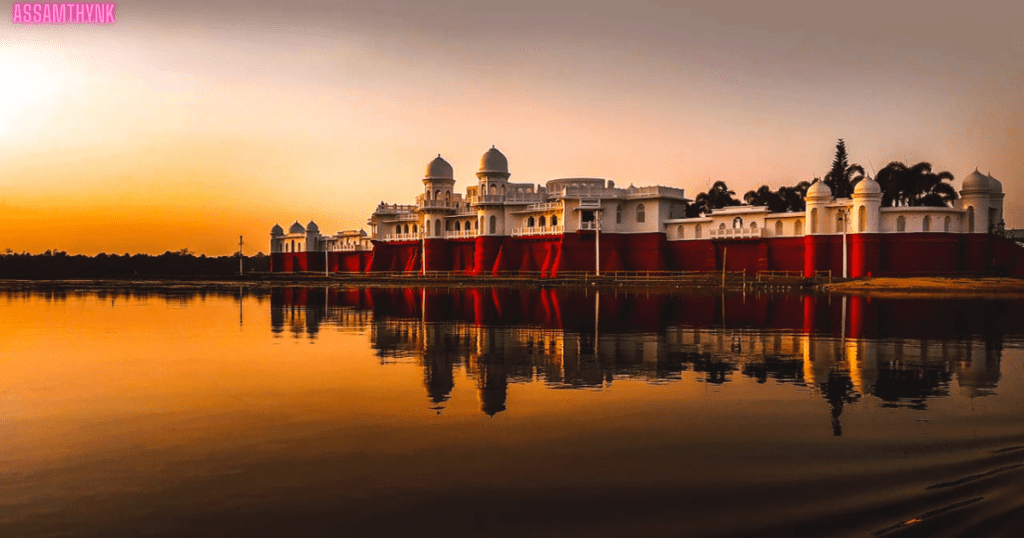
Surrounded by serene waters, Neermahal served as the summer retreat for the Manikya kings. The palace is divided into two sections—one for the royal family and the other for cultural performances and festivities. Its grand halls, intricately designed balconies, and beautiful pavilions offer a glimpse into the luxurious lifestyle of Tripura’s royalty.
Visitors can reach Neermahal by boat, adding to the charm of the experience. The annual Neermahal Water Festival, featuring boat races and cultural programs, attracts tourists from across the region. The palace’s reflection on the tranquil lake, especially during sunrise and sunset, creates a breathtaking view.
A visit to Neermahal is a journey into Tripura’s royal past, offering history, architecture, and natural beauty in one enchanting destination. It is a must-visit for anyone exploring the cultural heritage of Northeast India.
- Best Time to Visit: October to March
- Attractions: Boat rides, Neermahal Water Festival
3. Tripura Sundari Temple:
The Tripura Sundari Temple, also known as Mata Tripureshwari Temple, is one of the holiest pilgrimage sites in India. Located in Udaipur, Tripura, this revered temple is dedicated to Goddess Tripura Sundari, an incarnation of Goddess Parvati. It is considered one of the 51 Shakti Peethas, making it a significant religious destination for devotees.
Built in 1501 by Maharaja Dhanya Manikya, the temple follows a distinctive Bengali-style architecture with a square sanctum, resembling a small pagoda. The idol of Tripura Sundari, also known as Maa Kali, is made of black stone and is about five feet tall. A smaller idol, Chhoto Maa, is also worshipped alongside the main deity.
A sacred lake, Kalyan Sagar, lies beside the temple, adding to its spiritual aura. Devotees feed the turtles in the lake, believing it to be an act of virtue. The temple attracts thousands of pilgrims, especially during Diwali, when a grand festival is held.
Tripura Sundari Temple is not just a place of worship but also a cultural landmark, showcasing the deep-rooted traditions of Tripura. Its divine ambiance and historical significance make it a must-visit for spiritual seekers and tourists alike.
- Best Time to Visit: October to March
- Attractions: Pilgrimage, religious significance
4. Sepahijala Wildlife Sanctuary:
Sepahijala Wildlife Sanctuary, located about 25 km from Agartala in Tripura, is a lush green haven for nature lovers and wildlife enthusiasts. Spanning 18.5 square kilometers, this sanctuary is home to a diverse range of flora and fauna, making it one of the most popular eco-tourism destinations in Northeast India.
The sanctuary boasts rich biodiversity, housing over 150 species of birds, primates like the rare Phayre’s langur, and animals such as clouded leopards, barking deer, and civets. It is also home to a large artificial lake, Amrit Sagar, where visitors can enjoy boating while soaking in the scenic beauty. The botanical and orchid gardens further enhance its charm.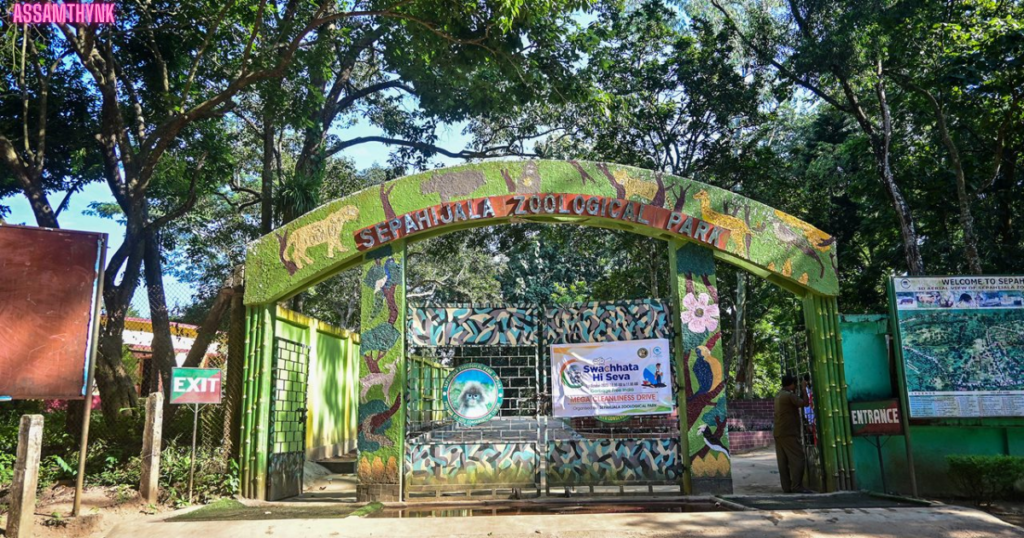
One of the main attractions is the Clouded Leopard National Park, dedicated to the conservation of this elusive big cat species. The sanctuary also has a zoological park, a deer park, and a tropical forest area, offering an immersive experience for visitors.
With its serene atmosphere, well-maintained trails, and opportunities for birdwatching and wildlife spotting, Sepahijala Wildlife Sanctuary is truly a nature’s wonderland. Whether for adventure, relaxation, or wildlife photography, this sanctuary is a must-visit destination for anyone exploring Tripura’s natural beauty.
- Best Time to Visit: November to March
- Attractions: Wildlife, trekking, boating
5. Jampui Hills:
Jampui Hills, nestled in the northern part of Tripura, is a breathtaking hill range known as the “Land of Eternal Spring.” Located at an altitude of about 1,000 meters, these hills enjoy a pleasant climate throughout the year, making them a perfect retreat for nature lovers.
The region is famous for its lush green forests, panoramic views, and vibrant orange orchards. The oranges grown here are considered among the best in the country, and the annual Orange & Tourism Festival celebrates this rich harvest. The hills also offer stunning sunrise and sunset views, with Betlingchhip, Tripura’s highest peak, providing a mesmerizing vantage point.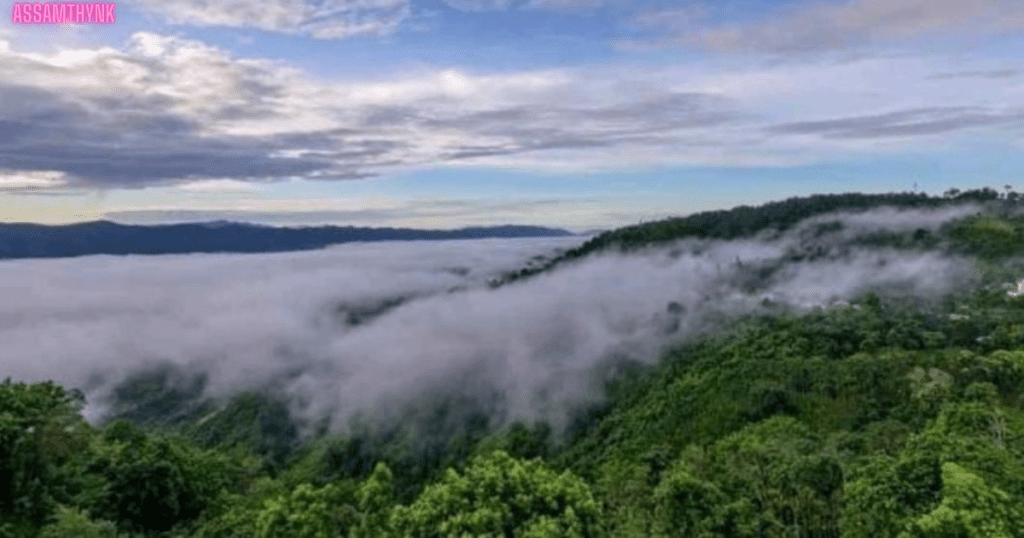
Jampui Hills is home to the Lushai tribal community, known for their warm hospitality and unique culture. Visitors can experience the traditional lifestyle of the locals while enjoying the region’s serene beauty. The hills also offer trekking opportunities, making them a great destination for adventure enthusiasts.
With its cool climate, misty landscapes, and rich biodiversity, Jampui Hills is a paradise for tourists seeking peace and natural beauty. Whether for relaxation, photography, or cultural exploration, this enchanting hill station remains one of Tripura’s most captivating destinations.
- Best Time to Visit: October to March
- Attractions: Scenic views, orange orchards, cultural festivals
6. Unakoti:
Unakoti, meaning “one less than a crore”, is an ancient archaeological marvel in Tripura, famous for its massive rock-cut sculptures and mystical legends. Located about 178 km from Agartala, this site dates back to the 7th–9th centuries and is believed to be a Shaivite pilgrimage center.
The site features thousands of rock carvings, giant bas-relief sculptures, and stone images of Hindu deities, with Lord Shiva as the central figure. The most striking sculpture is the Unakotishwara Shiva, a 30-foot-high rock carving with intricate details. Other notable carvings include Ganesha, Durga, Nandi, and various other mythological figures.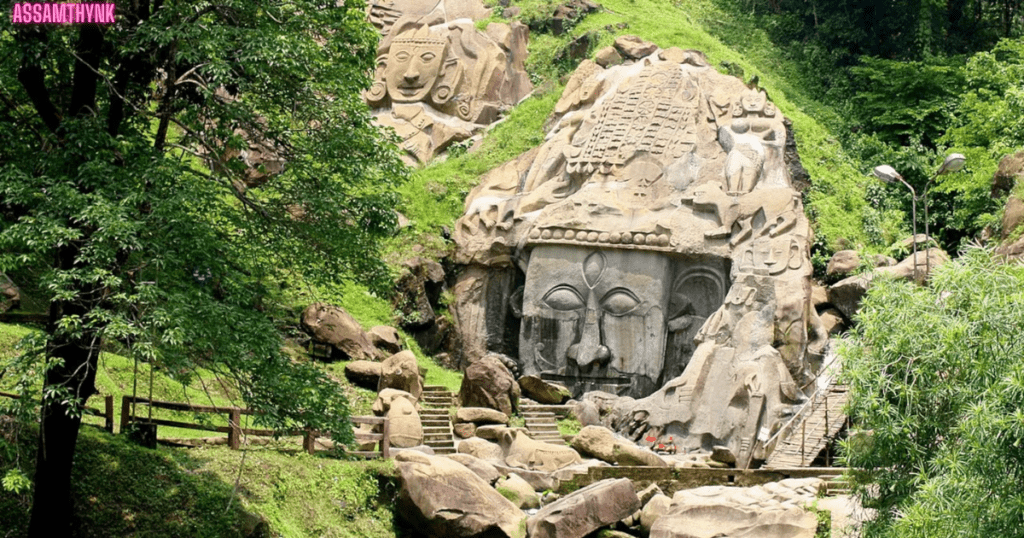
According to legend, Lord Shiva was traveling with 99,99,999 gods and goddesses to Kashi. He instructed them to wake up before dawn, but when they failed, he cursed them, turning them into stone, creating the Unakoti site.
Unakoti is a fascinating blend of history, art, and mythology, attracting pilgrims, history buffs, and adventure seekers alike. The Ashokastami Mela, held annually, draws thousands of devotees. Surrounded by lush forests and scenic beauty, this hidden gem is a must-visit destination for anyone exploring Tripura’s rich heritage and ancient wonders.
- Best Time to Visit: October to March
- Attractions: Rock carvings, religious site
7. Chabimura:
Chabimura, also known as Devtamura, is a mesmerizing archaeological site in Tripura, famous for its hidden rock-cut sculptures along the banks of the Gomati River. Located about 82 km from Agartala, this lesser-known gem features a series of ancient carvings on steep hills, dating back to the 15th–16th centuries.
The most striking sculpture at Chabimura is the 70-foot-tall carving of Goddess Durga, locally known as Chakrakma, along with intricate depictions of Lord Shiva, Vishnu, Kartikeya, and other deities. These magnificent bas-relief sculptures, etched onto the rocky cliffs, showcase the region’s rich artistic and religious heritage.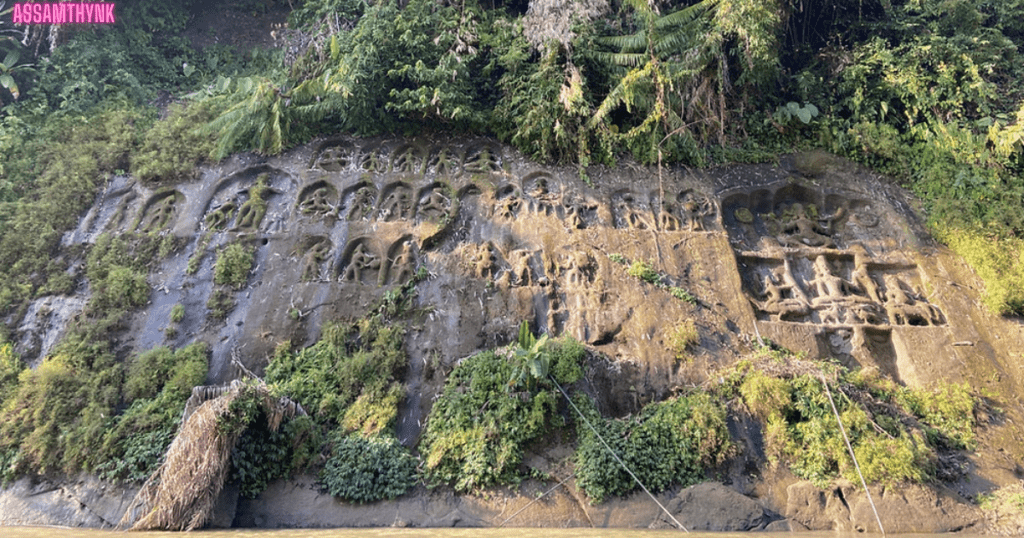
Accessible by boat, the journey to Chabimura offers a serene experience through dense forests and pristine waters, adding an adventurous charm to the visit. The area is also home to diverse flora and fauna, making it a paradise for nature lovers and photographers.
Despite its historical and cultural significance, Chabimura remains relatively unexplored, offering a peaceful escape into Tripura’s ancient past. For history enthusiasts, spiritual seekers, and adventure lovers, this hidden wonder is a must-visit destination that beautifully blends nature, mythology, and artistic brilliance.
- Best Time to Visit: October to March
- Attractions: Rock carvings, river views, tranquility
8. Rishyamuk Mountain:
Rishyamuk Mountain, one of the most revered and scenic spots in Tripura, is known for its mythological significance and breathtaking landscapes. Located near the Gomati River, this sacred peak is mentioned in the Ramayana, as the place where Lord Hanuman first met Lord Rama and Sugriva.
Surrounded by lush greenery and rolling hills, Rishyamuk Mountain offers stunning panoramic views of the surrounding valleys, making it a paradise for nature lovers and adventure seekers. The area is also rich in flora and fauna, attracting trekkers and photographers. With its tranquil ambiance and historical importance, the mountain holds great spiritual value for devotees.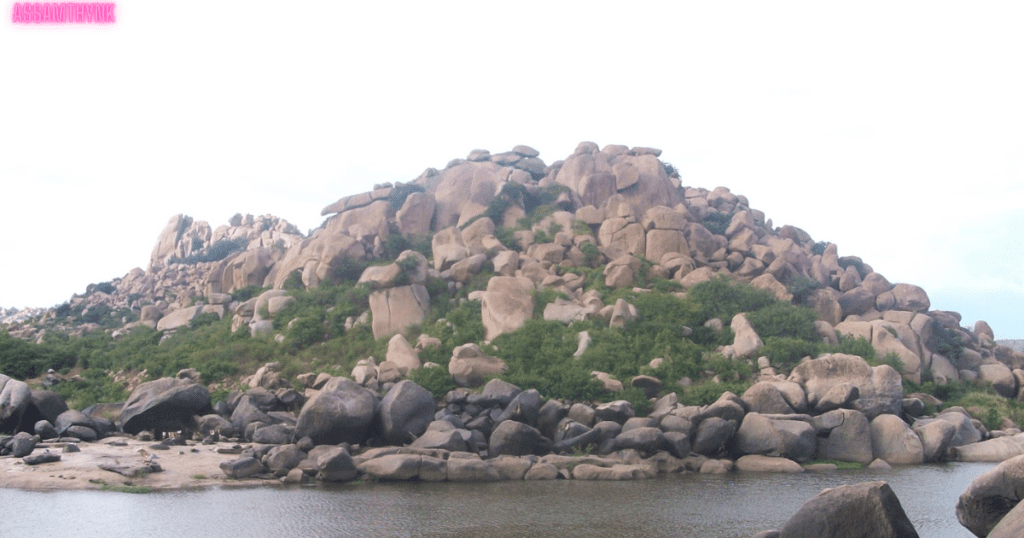
Tourists visiting Rishyamuk Mountain can also explore nearby tourist places in Tripura, such as the famous Tripura Sundari Temple, Chabimura rock carvings, and the picturesque Dumbur Lake. The region’s untouched beauty and religious importance make it a perfect destination for both spiritual seekers and explorers.
Whether you are interested in mythology, trekking, or simply soaking in nature’s beauty, Rishyamuk Mountain is a must-visit attraction. It stands as a unique blend of history, spirituality, and natural charm, adding to the diverse experiences that tourist places in Tripura have to offer.
- Best Time to Visit: October to March
- Attractions: Scenic views, pilgrimage
9. Rudrasagar Lake:
Rudrasagar Lake, one of the most beautiful tourist places in Tripura, is a picturesque water body located near Melaghar, about 55 km from Agartala. Spanning around 5.3 square kilometers, this serene lake is famous for being the home of Neermahal, India’s only water palace in Eastern India.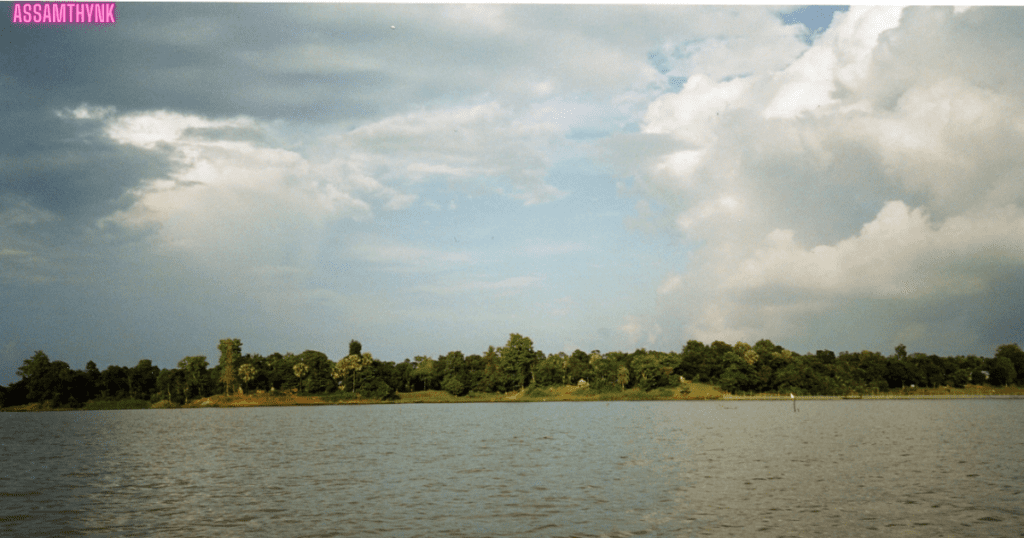
The lake is an important Ramsar Wetland Site, attracting a variety of migratory birds, making it a paradise for birdwatchers and nature lovers. The tranquil waters of Rudrasagar offer boating facilities, allowing visitors to experience the stunning reflection of Neermahal and the surrounding lush greenery. The lake is also a hub for local fishermen, contributing to the livelihoods of nearby communities.
A major attraction here is the Neermahal Water Festival, held annually in July and August, featuring exciting boat races and cultural programs. The combination of historical grandeur and natural beauty makes Rudrasagar Lake a perfect spot for relaxation and sightseeing.
For travelers exploring tourist places in Tripura, Rudrasagar Lake is a must-visit destination. Whether for its scenic charm, birdwatching, or cultural events, this tranquil lake promises a memorable experience amidst nature and history.
- Best Time to Visit: October to March
- Attractions: Boating, peaceful surroundings
Top 10 FAQs About Tourist Places in Tripura
- What are the best tourist places in Tripura?
- Ujjayanta Palace, Neermahal, Tripura Sundari Temple, and Sepahijala Wildlife Sanctuary are among the best tourist places in Tripura.
- What is the best time to visit Tripura?
- The best time to visit is between October and March when the weather is cool and pleasant.
- How can I reach Tripura?
- You can reach Tripura by air, with the Agartala Airport being well-connected, or by train and road from nearby states.
- What are some unique places to visit in Tripura?
- Unakoti and Chabimura are unique historical and cultural sites to visit.
- Is Tripura safe for tourists?
- Yes, Tripura is generally safe for tourists. However, it’s advisable to check local travel advisories.
- What is the culture of Tripura like?
- Tripura has a rich cultural heritage, with influences from Bengali, indigenous tribes, and royal traditions.
- Are there any eco-tourism spots in Tripura?
- Yes, places like Sepahijala Wildlife Sanctuary and Jampui Hills are perfect for eco-tourism.
- Can I enjoy adventure sports in Tripura?
- Yes, you can enjoy activities like trekking, birdwatching, and boating in various places in Tripura.
- What festivals are celebrated in Tripura?
- Festivals like Durga Puja, Diwali, and the Neermahal Water Festival are celebrated with great enthusiasm.
- How many days do I need to explore Tripura?
- A 5-7 day trip is ideal to explore the major tourist places in Tripura at a comfortable pace.
Conclusion: Explore the Wonders of Tripura
From royal palaces to tranquil lakes and rich wildlife, Tripura offers some of the most captivating tourist places in Tripura. Whether you’re a history enthusiast, nature lover, or someone seeking spiritual solace, this state has something for everyone. Plan your visit now and immerse yourself in the charm of Tripura.